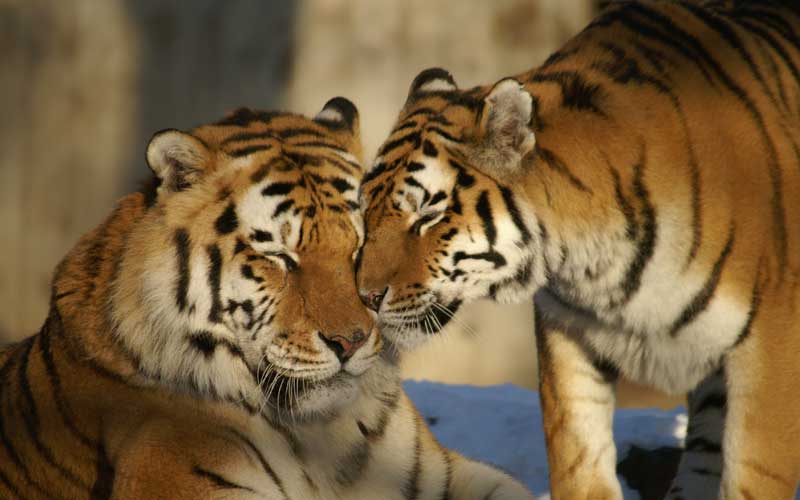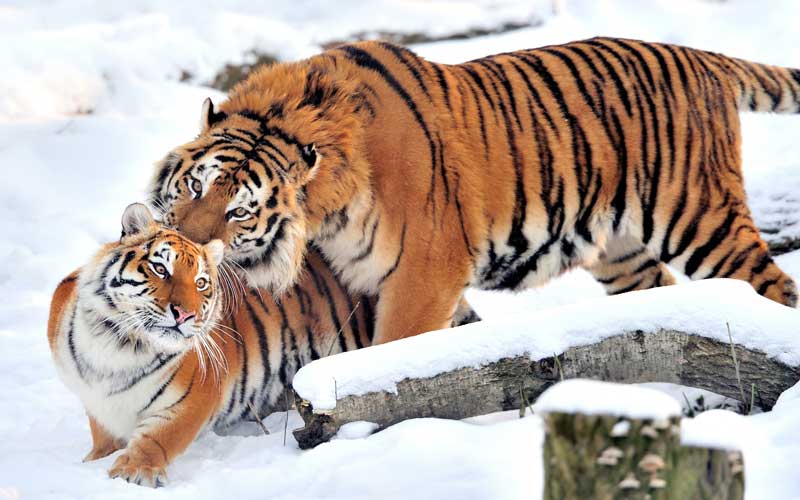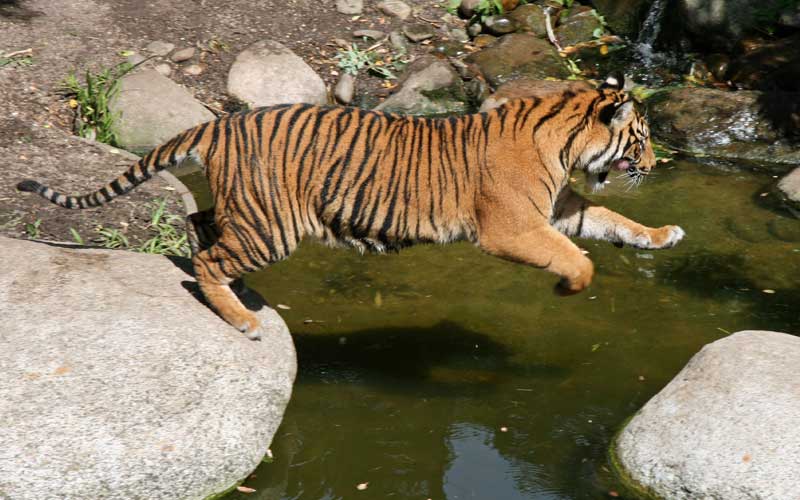Tigers are not animals characterized for being sociable; The only social links are those of a mother with her offspring. Males and females are polygamous and only encounter in the estrus period, and after mating, both take different paths.
The breeding habits of tigers have some differences among species, but some standard practices are here.
THE LIFE CYCLE
Tigers reach sexual maturity between 3 and five years; Females mature at 3 or 4 years of age, but males do it a little later, at 4-5 years.
Mating occurs at any time of year, although in regions with tropical climates happens more frequently during the period between November and April when temperatures are colder. Those tigers living in temperate zones mate only during the winter months.
Females usually enter estrus every 3-9 weeks but are receptive only a few days, which are usually 3 to 6.
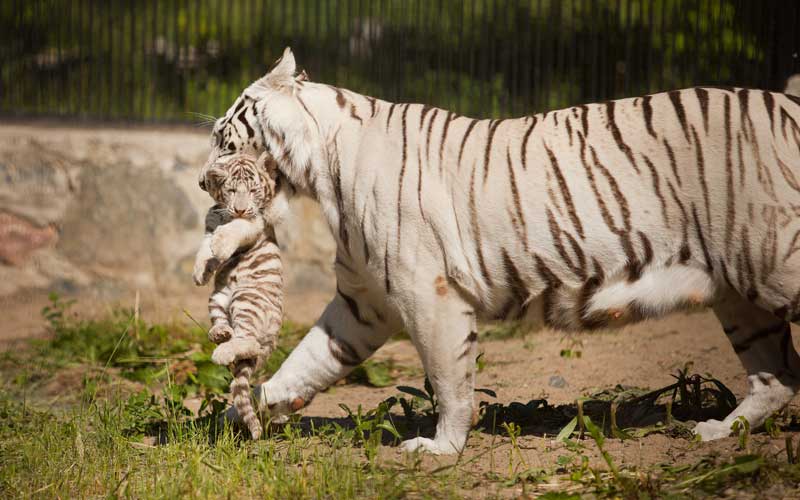
During the time before the heat, females mark their territory with urine that leaves a very particular smell, different from the smell that they always emit. Once a tigress enters heat, it tries to communicate it to the males emitting frequent and repetitive vocalizations that consist of roars, moans, and other odorous excretions.
When a receptive tigress and a tiger meet, perform a courtship ritual.
When a receptive tigress and a tiger meet, perform a courtship ritual by moving in circles and vocalizing; Both growl and approach and separate successively in the process of mutual recognition and trust building. Finally, they stay together, and the female begins to lick, groom and caress the male with the snout and then wallow on the ground and lie face down, indicating that it is ready. Then the Tiger gets on the tigress with the knees bent to avoid hurting it with its weight, the former roars and holds the tigress by the neck with its teeth while the female tries to stand.
For the tigress, copulation is a painful act, since the male’s penis has structures like spikes, although the process is repeated several times during the heat period, that is, 5 or 6 days. The act itself is very short because they induce ovulation; therefore there will be more opportunities for fertilization. It is common for a male to mate with several different females during its lifetime as long as he is healthy.
After conception, it will take 3 to 3.5 months for the offspring to be born. The gestation period usually lasts these months, translated in approximately 93-112 days. The size of the litter is usually 2 or 3 puppies (although they can be up to 7) that are born blind and defenseless in a cave, crevice, grotto or depression between tall grass, a reason why they depend on their mother during the first weeks of their life. From then on the female establishes a stable social bond with its cubs that lasts until they become independent.
The males sometimes try to kill the offspring if they come into contact with them.
Both Tigers take different ways after mating, so mothers will be on their own to take care of their young during the incubation period and afterward. Tigresses will find a den where they can go before their offspring are born.
The cubs born weighing about 2 pounds each, and they are completely dependent upon their mother as they are blind when they are born. They will stay in the den until they are about eight weeks old. The males sometimes try to kill the offspring if they come into contact with them. This behavior is because the female will be able to mate again with them.
Research has shown that there is a dominant cub in each litter. It is usually a male, but that isn’t always the case. The Cubs will engage in various types of play with each other and with their mothers. The predominant offspring will receive more food and care from the mother if things become scarce around. The Cubs will learn to hunt with their mother when they get older.
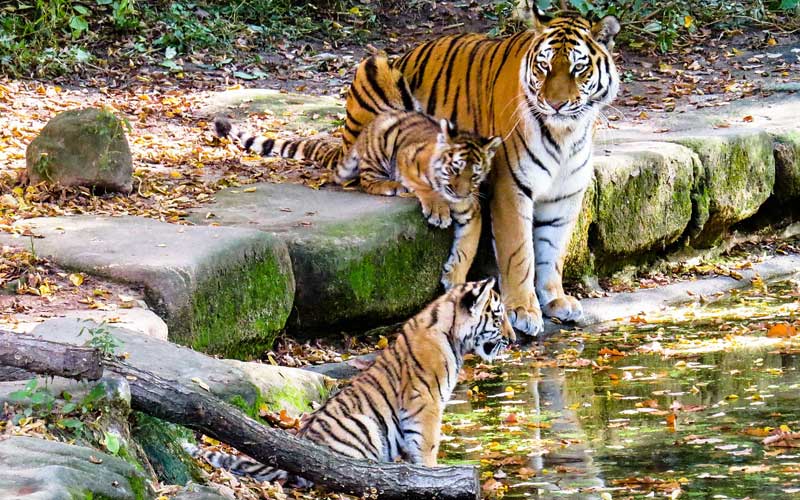
Males do not usually provide parental care; The tigress is responsible for caring the offspring, feeding them for 3-6 months and teaching them to hunt; The cubs learn the latter between 8 and ten months of age when they go out with their mother. The young Tigers play fighting with each other and thus acquire the speed and agility that they will need later when they are completely independent.
Independence occurs between 17 and 24 months of age, and the mother tends to wait 18-24 months to breed again.
The mortality rate for young tigers is extremely high.
The life cycle of tigers.
When tiger cubs are 1 ½ or 2 years old, they are ready to go out on their own. The females tend to make a territory that is very close to that of their mother, but the males though tend to spread out much further. The females are excellent mothers for their offspring and fierce protectors when it comes to keeping them safe from predators.
If things get though, mothers have to choose only one of the cubs. It usually will be the dominant of the litter as it is the one with the highest chances of survival.
The mortality rate for young tigers is extremely high. Less than half of them survive the fist two years of life. They may be victims of males, the lack of food or killed by other animals if the mother is not around.
References
The Biology and Conservation of Wild Felids. David Macdonald, Andrew Loveridge. Oxford University Press, 2010.
Wild Cats of the World. Luke Hunter. Bloomsbury Publishing, 2015.
https://seaworld.org/en/animal-info/animal-infobooks/tiger/reproduction
https://seaworld.org/en/animal-info/animal-infobooks/tiger/birth-and-care-of-young
http://animaldiversity.org/accounts/Panthera_tigris/#reproduction

